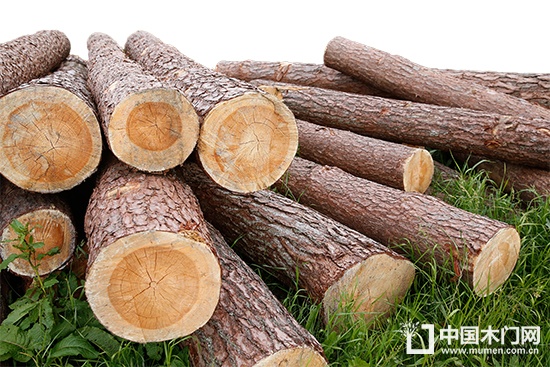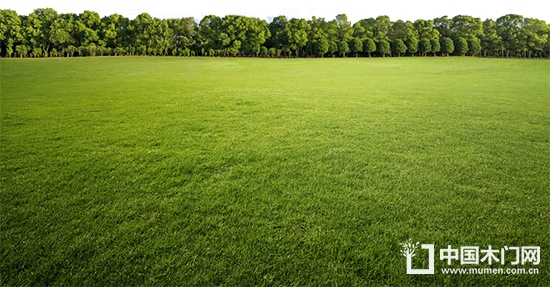Although there are many trees in China, many furniture companies still import timber from abroad because of differences in varieties. “Imported timber company†refers to a company that specializes in timber imports. The company must import timber for customs declaration. There are two types of timber import declarations: general trade import declarations and manual import declarations.
The varieties of wood imported from different countries and regions are different and will be used differently. When importing wood, you need to know the relevant imported wood knowledge. The following small series will introduce you to the world's imported wood knowledge varieties, and friends who have needs may wish to come in and have a look.
Imported wood knowledge
The main varieties of imported wood in Europe - Finnish pine, European oak, maple, oak, red cedar, cork, aspen, cedar, hemlock, willow mahogany, mahogany.

The main varieties of Australian imported wood - New Zealand pine, palm tree, eucalyptus, cedar, white sandalwood and mahogany.
The main varieties of timber imported from North America - Longleaf World, California Hemlock, Douglas Fir, West Coast Spruce, Columbia Spruce, Jackson, Black Pine, White Pine, Western Larch, Red Fir, Lowland Fir, Pacific Fir, Black walnut, white oak, American arborvitae, Alaska cypress, Roche red cricket, American black walnut, maple, American beech, cherry wood, American hackberry, ash tree, American alder, red oak, white oak , American Liriodendron, American Pine, American Black Pine, Western Plus Spruce, Engelman Spruce, Redwood, American Southern Pine, Douglas Fir, American West Hemlock, American West Red Tarbury, Rosen, Alaska Cypress, Canadian wood, American wood, birch, gray walnut, wax wood.
The main varieties of imported timber in Africa - Ou Fai cut wood, African yellow paulownia, African black walnut, Marco mulberry, Longguyi, Moabibi, Ilocuomu, African mahogany, Uthai , Shabeliemu, Tiamumu, African Lamu, African Teak, Weijimu, Zebra, Mt. Mumu, Oyster Kormu, Yahya Wood, East African Black Rosewood, Beliwood, Zebra Wood, African Red Sandalwood, African Teak, Sabi, Mimka, West African Miki, Asian Soft Shell Wood, African Silver Leaf Tree, East African Wood Rhinoceros, Yellow Hardwood, Owen Kersu, Winged Apple Wood, Africa Red Sumu, Spiked Sumu, African dong, Yishia, Omega, Sang Mulberry, African Mahogany, African Cherry, Mansen Sycamore, Chrysanthemum, Angola Rosewood, African Cliff Bean, Zebra , Shabeliedongmu, Sycamore, Red Ironwood, African Pear, African Teak, Mumingamu, Cylindrical African Pelican.
The main varieties of wood imported from Southeast Asia - eucalyptus, picking Asian wood, teak, Yunnan sarcophagus, Nanyangtong, blackboard tree, liangas, Nanyang walnut, ebony, Indonesian golden sandalwood, oil, Apiton, Cabo, Guilan, Ba Du Liu, Huang Mei Lan Di, Bai Mei Lan Di, Light Red Meilan, Crimson Meilan, Rubber Wood, Silver Birch, Balsa, Lelian, New Guinea Boxwood, Silver Birch, White Wood, Nanyang, Rosewood, Raspberry Dalbergia (Gentiana), Dalbergia, Helianthus chinensis, Dagan Croton, Kangbas, Linnan, Pacific Ironwood, Iron Knife, Borneo Ironwood, Nanyang Wuxinshi, Fujian Bai .

Imported wood species
1: Types of imported wood by origin
South American imports of wood: mahogany, purple heartwood, wakala wood, Dada wood, balsa wood, harsh barry wood, Suriname snake wood, new rice wood, radiata pine, Eurasmus, Chinese tung, etc. Representative of this category.
European imported wood: European oak, maple, Finnish pine, red cedar, cork, oak, cedar, hemlock, aspen, mahogany, poplar mahogany.
Wood imported from North America: Jackson, Black Pine, White Pine, West Coast Spruce, Columbia Spruce, Western Larch, Red Fir, Lowland Fir, Red Oak, White Oak, Douglas Fir, Birch, Grey Walnut, Wax Wood, Rosen, Alaska, is the main representative species.
African imported wood: Oufei cut wood, Bei Limu, Ya soft shell wood, Tiemama wood, East African wood rhinoceros, yellow biliary wood, African wax wood, zebra wood, winged apple wood, Angora rosewood, African paulownia , red iron wood, tubular African cockroaches and so on as the main representative varieties.
In addition, there are imported woods in Southeast Asia represented by eucalyptus, Guilan, and Huangmeilan, and Australian imports of wood represented by palm trees, cedar trees, and rosewood.
2: Types of imported wood by attribute
According to the properties of imported wood, it can be divided into four categories: rosewood, Dalbergia, genus, genus, and persimmon:
1, red sandalwood can also be subdivided into rosewood, rosewood, etc., sandalwood rosewood (India) that is Indian lobular rosewood, only this one belongs to rosewood, and Andaman rosewood (prolific in India, Anda Manitoba), Hedgehog rosewood (prolific in tropical Africa), Hedgehog rosewood (prolific in tropical Africa) and so on.
2, Dalbergia is roughly divided into fragrant wood, black rosewood, red rosewood, etc., knife-like black rosewood (prolific in Myanmar), black rosewood (prolific in Southeast Asia), broadleaf yellow Tan (prolific in India, Indonesia, Java), Amazonian Dalbergia (prolific in Brazil), Brazilian Dalbergia (prolific in tropical Asia) and so on.
3, genus, genus genus is only chicken wing wood, specifically can be subdivided into African yadou wood (prolific in the African Congo basin), white flower yamu wood (prolific in Myanmar, Thailand), iron knife (prolific in Southeast Asia) and so on.
4. Persimmon is divided into two types: ebony and striped ebony, including ebony (producing in the Philippines), ebony (producing in Sri Lanka), and pepo ebony (producing in the Philippines).
Imported wood process
Although many lumber merchants have been engaged in timber import business for many years, they have not understood the business process of timber import declaration. Here, the process of import declaration of timber is collected and compiled for the reference of timber merchants.
First, the basic operational process:
Sign the import agency contract → Provide the information provided by the import enterprise → Confirm the customs code and import tariff rate → Confirm whether the non-endangered species certificate needs to be processed → Foreign forest farms (confirm the goods have been prepared) → Order warehouse → Loading → Shipping → Arrival → Payment Freight → Ship change place change → inspection → customs declaration and review price → customs review price tax return → pay tax payment → customs check cabinet → release goods → fumigation → dock tow cabinet (disinfection time is 30 minutes, queue disinfection) → pick up → Delivery to designated locations in China

Second, the time required for work:
1, to the port of lading to change the order, half a day
2, (or at the same time) to declare the commodity inspection in advance, issue the business check, 2 days
3, official customs declaration, release, 1 day
4, haulage in the port, waiting in line to arrange disinfection and quarantine, sanitation, 2--15 days
5, signature, pick up the goods from the port, half a day
(The above is the working day loss of general operations, subject to the specific operation schedule)
3. The documents required for timber import are:
Certificate of origin, phytosanitary certificate, fumigation certificate, code list, packing list, commercial invoice, trade contract, ocean bill of lading.
Imported mahogany, also need to apply for species import license, endangered timber needs to apply for endangered species certificate, need to provide CETES ocean bill of lading for the consignee is your company, please provide a letter of attorney and bill of lading endorsement.
4. Timber import tax:
13% of logs, 17% of wood, and 20.5% of veneer.
5. What are the most concerned issues for log import customs declaration customers?
1. How long does it take for logs to go from Africa to South America? Does it affect the weight of the product?
2. Based on the factors that the purchaser is not on site, what should I do if the weight of the document is different from the actual volume?
3. If the certificate of origin and the disinfection and quarantine certificate are lost in the middle, how will it be re-applied?
4. How to apply for a 14-21 day import terminal free lease?
5. How do I charge for the loss of various shipping companies?
6. I am worried that the current trial price and purchase price are too far apart?
7. Can you give a detailed list of the import terminals, transportation, and miscellaneous charges for a batch of goods?
8. If the cabinet is large, can there be a discount for logistics services?
9. If I am an intermediate trader, can your company represent us directly to domestic consignees?
10. The price of the log market fluctuates greatly. How can I control my import turnover time?
6. What are the elements that should have the advantages of imported timber freight forwarding?
1. Experience in importing rich wood, logs and wood products at various ports.
2. Accurately inquire about the customs import price of related timbers in South America and Africa.
3. It can flexibly and quickly process related packing documents, invoices and other declaration documents.
4. It can provide customers with rapid disinfection, fumigation and quarantine work through reasonable requests.
5, save terminal fees, cabinet rental fees, convenient time to pick up the goods.
Seven: import approximate cost agent logistics advance payment
1, change the fee - terminal fee - cabinet rental fee,
2, agents check the declaration fee - customs agent - commodity inspection agent - quarantine disinfection
3, the business check cabinet procedures plus (depending on whether there is inspection):
4, port fee: five thousandths of the value of the goods
5, commodity inspection fees: three thousand / votes.
Remarks: At present, the common logs imported from China are: Canadian elm, Canadian white elephant wood, African mahogany, African yellow pear, Benin Cotonou's Asian rosewood, Guyana's iron knife, Mozambique's leaflet red sandalwood, American red and white oak, North American walnut, Thai rubber wood, Indonesian Bologna and so on.
Eight: log import general trade declaration
1. Order: After receiving the documents, check whether the documents are complete and accurate documents: phytosanitary certificate, certificate of origin, bill of lading.
2, change the order: After receiving the customer's full set of documents, it is necessary to find out which shipping company the imported goods belong to, which one is the shipping agent, and where can be exchanged for the bill of lading for customs clearance. To see what type of bill of lading is the original or the electric bill is generally an endorsement of the bill of lading or bill of lading and the corresponding endorsement on the bill of lading, the endorsement of the bill of lading to the corresponding ship division / boat exchange in exchange for the bill of lading!
Upon receipt of the shipping company's arrival notice, we must add the correct Chinese customs declaration information to the shipping company (it is better to add a full set of documents to supplement the data error rate is relatively small)
3, inspection: need to apply for inspection power of attorney, to check whether the information is complete and accurate, the most attention to the wood is the phytosanitary certificate and the information on the certificate of origin is consistent, such as the certificate of phytosanitary certificate of the certificate of origin or no application for fumigation, However, the director must approve the goods and the customs clearance will be completed after the completion of the commodity inspection and billing. Guangzhou Nansha Port Log Wood Panel Wood Import Agents Clearance Customs Clearance
4, customs declaration: customs declaration information: bill of lading customs clearance single box, invoice, contract, customs declaration and other information, sent to the customs, customs review, customs declaration data passed to the customs after the bill, if the trial center returns the bill according to the situation Re-changed and sent (usually for specification purposes). One of the cases is that the price transfer review center believes that the price we quoted is too low and needs to be revalued. There are three situations in which the transfer is made:
(1). The original price passed
(2). According to the customs price
(3). The price negotiated by both parties
After the price is passed, the customs tax will be released and the tax bill will be released. If the price cannot be reached, the customs clearance can be used first. After the price is determined, the tax bill will be issued. If the price is refunded, the customs will control the inspection. 30%) After the goods are checked, release!
5, release: take the line to go to the ship secretary to lift the cabinet list all the expenses must be settled, you need to pay the deposit to pay the deposit, the trailer to deliver the goods!
Timber imports need to pay attention to the problem:
The Latin and English names of imported timber are related to the customs price.
Different types of wood should choose the right port.
Imports of timber are 0 tariffs, and the value-added tax for logs and wooden furniture is different. Logs: value of goods *13% wood furniture: value of goods *17%)
Document.body.oncopy = function () { setTimeout( function () { var text = clipboardData.getData("text"); if (text) { text = text + " This article comes from China Wooden Door Network, China's well-known wooden door industry portal Website! (http://) Detailed reference: "+location.href; clipboardData.setData("text", text); } }, 100) }Restaurant Sofa,Restaurant Booth Sofa,Sofa Booth For Restaurant,Restaurant Sofa Booth Seating
Foshan Livemate Appliance Co., Ltd. , https://www.livemate-furniture.com